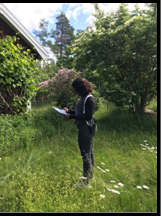Background
Aims
Urban areas have seen a decline in ecosystem services (ESS) provision due to the replacement of natural land covers, such as vegetation with urban materials like gravel, asphalt and metal. Consequently, the demand for ESS exceeds their supply by urban landscapes. To address this problem, policymakers and planners are turning to green infrastructures, such as urban gardens to promote urban sustainability.
Urban gardens, as green spaces, have the potential to provide a variety of ESS, including pollination, food production, recreation, and nutrient cycling. Overall, all ESS are divided into four main categories namely; provisioning, regulating, supporting, and cultural services. These ecosystem services are interdependent and often occur together in bundles. This interdependent nature can result in synergies (increase in a service lead to an increase in another service), tradeoffs (increase in a service lead to a decrease in another service), or no effect among ecosystem service bundles.
However, despite their potential contributions to urban sustainability, urban gardens remain one of the least researched ecosystems. Therefore, there is a lack of understanding regarding their ability to provide bundles of ESS and how management practices implemented in these gardens affect the provision of ESS. By exploring this topic, we can gain a better understanding of the roles that urban gardens play in promoting urban sustainability.
- Assess the ability of urban gardens in Linköping to provide ESS.
- Identify and investigate the effects of management intensity on the provision of ESS by urban gardens.
- Analyse the type of interaction among ecosystem service bundles
- Compare the use of cultural services before and during Covid pandemic
